
equivalent fractions worksheet pdf
Equivalent fractions are fractions that represent the same value, even though their numerators and denominators differ. These fractions are fundamental in simplifying complex math problems and understanding proportional relationships. Worksheets provide interactive and visual methods for students to explore and master equivalent fractions through practical exercises and real-world applications.
1.1 Definition of Equivalent Fractions
Equivalent fractions are fractions that represent the same value, even though they may appear different. For example, 1/2 and 2/4 are equivalent because they both represent half of a whole. These fractions can be created by multiplying or dividing both the numerator and denominator by the same number. Understanding equivalent fractions is essential for simplifying expressions, comparing fractions, and solving equations. They play a crucial role in developing a strong foundation in fraction concepts and are widely used in various mathematical operations. Equivalent fractions are identified by their equal value when converted to decimals or percentages. This fundamental concept is explored in detail through equivalent fractions worksheet pdf resources, which provide interactive and visual learning tools for students to grasp this idea effectively. Mastering equivalent fractions is a cornerstone of math education, enabling learners to tackle more complex problems with confidence and accuracy.
1.2 Importance of Learning Equivalent Fractions
Learning equivalent fractions is crucial for building a strong foundation in mathematics. It enhances problem-solving skills and prepares students for advanced concepts like ratios, proportions, and decimals. Equivalent fractions help in simplifying complex fractions and comparing different values effectively. They are essential for real-world applications, such as cooking, construction, and finance, where precise measurements and calculations are necessary. Understanding equivalent fractions also improves logical reasoning and mathematical fluency. By mastering this concept, students can approach higher-level math with confidence and accuracy. Equivalent fractions worksheet pdf resources provide engaging and structured exercises that make learning this vital skill both enjoyable and effective. These worksheets are designed to cater to different learning styles, ensuring that every student grasps the importance and application of equivalent fractions in their academic and daily lives.
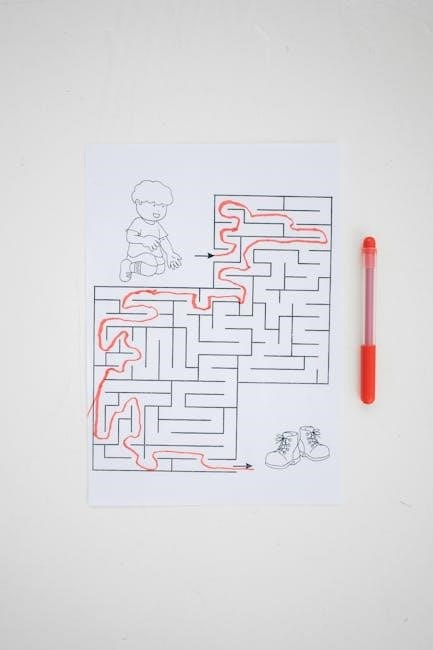
Types of Equivalent Fractions Worksheets
Equivalent fractions worksheets come in basic, interactive, and advanced forms, catering to different learning needs and skill levels, and are widely available as PDF resources for easy access and practice.
2.1 Basic Equivalent Fractions Worksheets
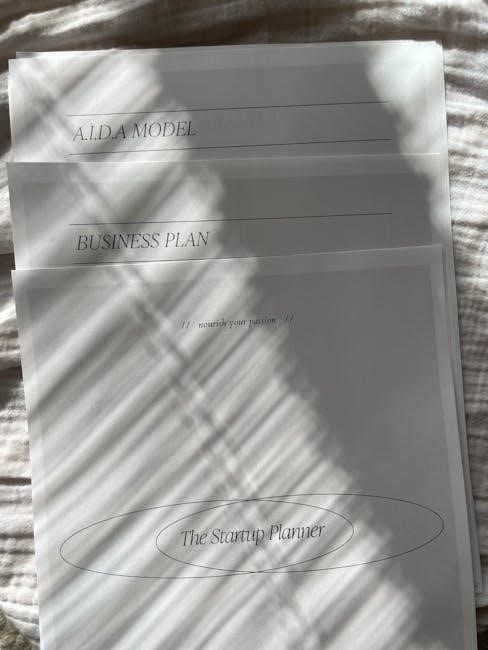
Basic equivalent fractions worksheets introduce foundational concepts, focusing on identifying and creating equivalent fractions. These worksheets typically involve simple exercises like matching fractions, filling in missing numerators or denominators, and circling equivalent pairs. They are designed for beginners, ensuring a solid understanding of fraction equivalence before progressing to more complex tasks. Many of these worksheets are available in PDF format, making them easily accessible and printable for classroom or home use. Activities often include visual aids like bar models or shaded areas to help students visualize the concept of equivalent fractions. By practicing with these basic worksheets, students build the necessary skills to tackle more challenging problems in the future.
2.2 Interactive Equivalent Fractions Worksheets
Interactive equivalent fractions worksheets offer engaging and dynamic ways for students to learn about fraction equivalence. These worksheets often include hands-on activities such as matching games, where students pair fractions with their equivalents, or shading tasks that visually represent equivalent fractions. Some worksheets incorporate bar models or number lines to help students understand the relationship between different fractions. Additionally, interactive PDF versions allow students to fill in answers directly on the document, making the learning process more efficient. These worksheets are particularly effective for visual and kinesthetic learners, as they provide a more immersive experience compared to traditional paper-based exercises. By leveraging interactive elements, these worksheets make the concept of equivalent fractions more accessible and enjoyable for students of all learning styles. They are a valuable resource for both classroom instruction and independent study, fostering a deeper understanding of fraction equivalence through active participation.
Advanced equivalent fractions worksheets are designed for students who have mastered the basics and are ready to tackle more complex problems. These worksheets often involve multiple-step exercises, such as simplifying fractions to their lowest terms before identifying equivalents. They may also include word problems that require students to apply equivalent fractions in real-world scenarios, like dividing resources or scaling recipes. Some advanced worksheets incorporate algebraic elements, where students must solve for unknowns to find equivalent fractions. Additionally, these worksheets often include mixed numbers and improper fractions, challenging students to convert between forms while maintaining equivalence. Visual aids like bar models and number lines are sometimes used to help students visualize more intricate relationships between fractions. These advanced exercises prepare students for higher-level math by reinforcing their understanding of fraction operations and their practical applications. They are an essential tool for building a strong foundation in fractions and preparing students for algebra and beyond. Worksheets often include matching equivalent fractions, fill-in-the-blank exercises, shading tasks, and problem-solving with bar models. These activities help students identify and create equivalent fractions through interactive and visual methods, reinforcing fraction concepts effectively. Matching equivalent fractions is a popular activity where students identify pairs of fractions that represent the same value. This exercise enhances recognition of fraction equivalence by comparing numerators and denominators. Worksheets often present fractions in different forms, such as 1/2 and 2/4, for students to match. Visual aids like bar models or shaded areas are sometimes included to help visualize the concept. This activity reinforces the understanding that multiplying or dividing both the numerator and denominator by the same number results in an equivalent fraction. By engaging in these exercises, students develop a strong foundation in fraction concepts, which is crucial for advanced math topics like decimals and ratios. Fill-in-the-blank exercises are a cornerstone of equivalent fractions worksheets, offering students a hands-on approach to mastering fraction equivalence. These exercises typically present fractions with missing numerators or denominators, requiring students to complete the pairs to ensure equivalence. For example, a worksheet might ask students to fill in the blank in 1/2 = ___/4, promoting direct practice with fraction relationships. This activity strengthens problem-solving skills by encouraging students to think critically about how fractions can be scaled up or down while maintaining their value. By engaging with these exercises, learners gain confidence in their ability to manipulate fractions and understand the underlying principles of equivalence. Fill-in-the-blank tasks are particularly effective for reinforcing fraction concepts in a structured and engaging manner. Shading tasks are an engaging way for students to visually identify and understand equivalent fractions. These exercises often involve shading parts of shapes, such as circles or rectangles, to represent specific fractions. For example, students might shade half of a circle and then identify other shaded portions that represent equivalent fractions like 2/4 or 4/8. This hands-on approach helps learners connect the concept of equivalence to tangible representations, making abstract ideas more concrete. Shading tasks also encourage students to think critically about how different fractions can express the same value. By analyzing shaded areas, students develop a deeper understanding of fraction relationships and improve their ability to recognize equivalence in various forms. These activities are particularly effective for visual and kinesthetic learners, as they provide a practical and interactive method for mastering equivalent fractions. Shading tasks make learning fun and accessible, ensuring a strong foundation in fraction concepts.2.3 Advanced Equivalent Fractions Worksheets

Common Activities in Equivalent Fractions Worksheets
3.1 Matching Equivalent Fractions
3.2 Fill-in-the-Blank Exercises
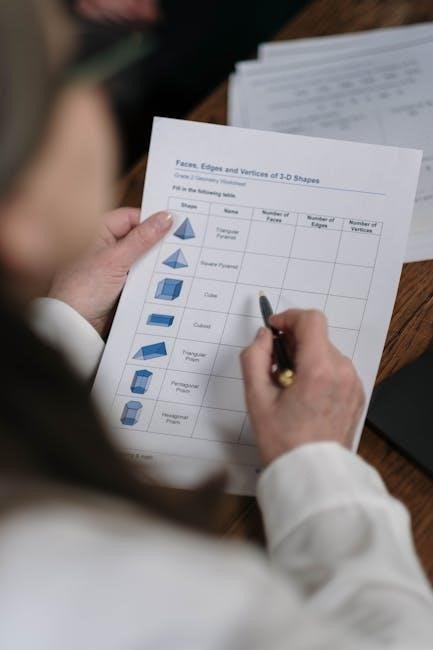
3.3 Shading Tasks to Identify Equivalence
3.4 Problem Solving with Bar Models
Bar models are a powerful tool for teaching equivalent fractions, offering a visual representation that simplifies complex concepts. These models use segmented bars to illustrate fractions, making it easier for students to compare and identify equivalent values. For instance, a bar divided into four equal parts can represent 1/4, while another bar divided into eight parts can show 2/8, demonstrating equivalence through visual comparison. Bar models help students break down problems into manageable parts, fostering a clearer understanding of how different fractions can represent the same value. Interactive bar models in worksheets allow students to shade, label, and manipulate segments, enhancing their problem-solving skills. This method is particularly effective for visual learners, as it provides a concrete reference point for abstract fraction concepts. By using bar models, students can explore equivalent fractions in a structured and engaging manner, building confidence in their ability to solve fraction-based problems.

Benefits of Using Equivalent Fractions Worksheets
Equivalent fractions worksheets improve understanding of fraction concepts, enhance problem-solving skills, and build math confidence. They provide structured practice, helping students grasp equivalence through visual and interactive exercises, fostering a strong foundation in math.
4.1 Improved Understanding of Fraction Concepts
Equivalent fractions worksheets play a crucial role in deepening students’ understanding of fraction concepts. By engaging with these resources, learners can visualize how different fractions represent the same value, fostering a clearer grasp of proportionality and equivalence. Practical exercises, such as matching equivalent fractions or shading bar models, provide hands-on experiences that make abstract concepts tangible. These activities encourage students to recognize patterns and relationships between numerators and denominators, building a robust foundation in fraction basics. Interactive tasks also help students develop the ability to simplify and compare fractions, essential skills for advanced math. Through repetitive practice and real-world examples, worksheets ensure that students internalize fraction principles, preparing them for complex mathematical challenges ahead. This structured approach to learning enhances retention and confidence, making fractions less intimidating and more accessible for all learners.
4.2 Enhanced Problem-Solving Skills
Engaging with equivalent fractions worksheets significantly enhances problem-solving skills by encouraging critical thinking and logical reasoning. These resources present diverse challenges, such as identifying equivalent fractions, solving number problems, and interpreting shaded areas, which require careful analysis and strategic approaches. By practicing these tasks, students develop the ability to break down complex problems into manageable steps, fostering a systematic mindset. Interactive exercises, like matching equivalent fractions or completing bar models, further refine these skills by promoting visual understanding and hands-on application. Over time, students become adept at approaching problems from multiple angles, recognizing patterns, and applying fraction concepts to real-world scenarios. This structured practice not only strengthens their mathematical aptitude but also builds confidence in tackling challenging problems with precision and creativity.

4.3 Boosted Math Confidence
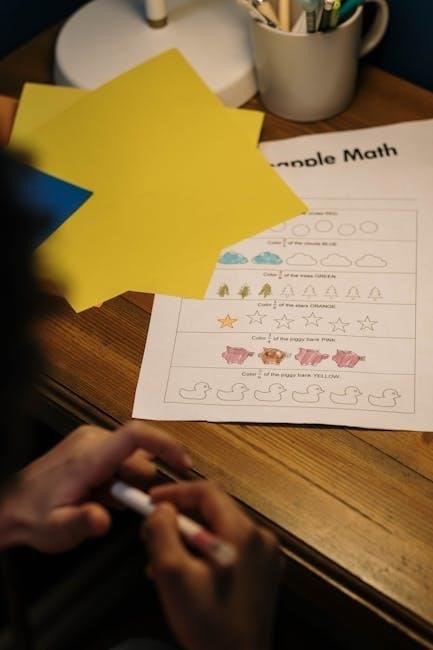
Equivalent fractions worksheets play a crucial role in boosting math confidence by providing students with structured exercises that foster a sense of accomplishment. As students progressively master identifying and creating equivalent fractions, their self-assurance grows, reducing math anxiety. Interactive activities, such as shading tasks and bar models, offer visual confirmation of their understanding, reinforcing their belief in their abilities. The repetitive practice and immediate feedback from worksheets help students recognize their progress, which is incredibly motivating. This confidence boost extends beyond fraction concepts, enabling students to approach other math topics with greater enthusiasm and resilience. By mastering equivalent fractions through engaging and varied exercises, students develop a stronger belief in their mathematical capabilities, laying a solid foundation for future academic success.
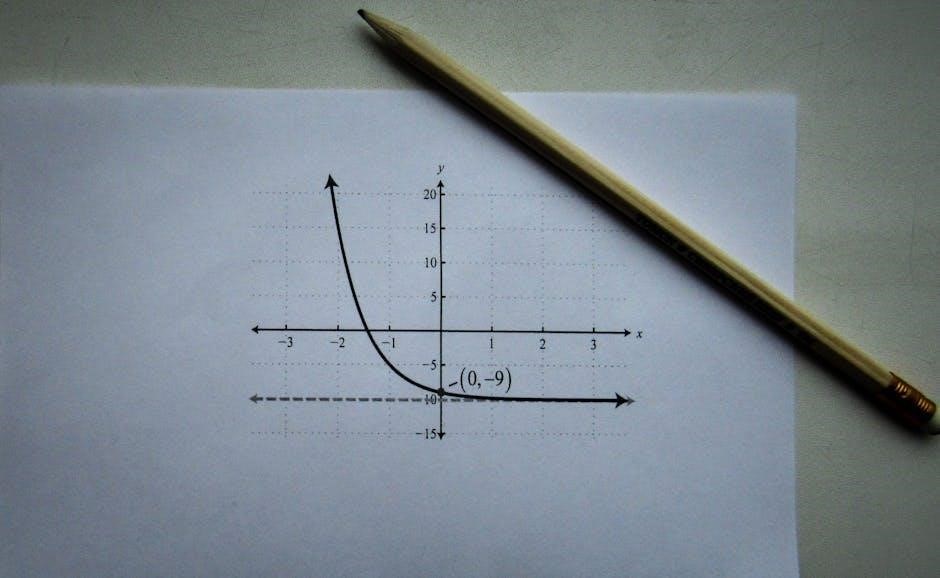
Tips for Effective Use of Equivalent Fractions Worksheets
Parents and teachers should guide students through practice, ensuring understanding. Establishing a consistent study routine with worksheets helps reinforce concepts. Incorporating real-world examples enhances comprehension and practical application of equivalent fractions.
5.1 Guided Practice for Parents and Teachers
Guided practice is essential for helping students master equivalent fractions. Parents and teachers can start by reviewing basic concepts together, ensuring a strong foundation. Using worksheets, they can engage students in activities like matching equivalent fractions, filling in missing numerators or denominators, and shading tasks. These exercises help students visualize and understand fraction equivalence. Encourage students to explain their reasoning, fostering critical thinking and problem-solving skills. For example, parents can use bar models to demonstrate how fractions like 1/2 and 2/4 are equivalent. Regular feedback and positive reinforcement are crucial to build confidence. By breaking tasks into smaller steps and providing support, parents and teachers can help students progress smoothly. Incorporating real-world examples, such as dividing food or measuring ingredients, makes learning more relatable and fun. Consistent practice with guided support ensures students grasp the concept of equivalent fractions effectively and apply it in various mathematical situations. This collaborative approach promotes a deeper understanding and lifelong math skills.
5.2 Creating a Study Routine with Worksheets
Establishing a consistent study routine with equivalent fractions worksheets is key to fostering long-term understanding. Parents and educators should set aside dedicated time daily for practice, ensuring students engage with these exercises regularly. Begin with basic worksheets, focusing on identifying and creating equivalent fractions. Gradually introduce more complex tasks, such as shading equivalence or solving real-world problems. Incorporating a mix of interactive and printable resources keeps the learning process engaging. For instance, starting with fill-in-the-blank exercises helps reinforce foundational concepts, while advanced bar model tasks challenge students to apply their knowledge. Encourage students to review their work, identifying areas where they need more practice. A structured routine not only builds math confidence but also enhances problem-solving skills. By consistently using worksheets, students develop a strong grasp of fraction equivalence, making it easier to tackle more advanced mathematical topics in the future. Regular practice ensures skills are retained and refined over time.
5.3 Using Real-World Examples to Reinforce Learning
Integrating real-world examples into equivalent fractions practice is a powerful way to make learning relatable and meaningful. Worksheets that incorporate practical scenarios, such as dividing pizzas, measuring ingredients, or comparing costs, help students see the relevance of equivalent fractions in daily life. For instance, a worksheet might ask students to determine equivalent fractions of ingredients in a recipe or to compare prices of items in a store. These tasks make abstract concepts more tangible and engaging. By connecting fractions to real-life situations, students can better understand how equivalent fractions are used to solve practical problems. This approach also encourages critical thinking and application of skills beyond the classroom. Parents and teachers can further enhance learning by discussing how fractions are used in cooking, construction, or finance. Real-world examples not only deepen understanding but also make practice more enjoyable and impactful, ensuring students retain their knowledge long-term.

Resources and References
Trusted websites offer downloadable PDF equivalent fractions worksheets, such as corbettmaths.com and math-drills.com. These resources provide free, printable materials designed for various grade levels, ensuring comprehensive practice for mastering equivalent fractions. Many worksheets include visual aids and step-by-step instructions to support learning and understanding.
6.1 Links to Download Equivalent Fractions Worksheets
Several reputable educational websites offer free PDF equivalent fractions worksheets for download. Websites like Math-Drills and Corbett Maths provide an extensive collection of worksheets tailored for different grade levels. These resources are designed to help students practice identifying and creating equivalent fractions through various activities, such as shading tasks, matching exercises, and fill-in-the-blank problems. Many worksheets are accompanied by visual aids like bar models and circle diagrams to enhance understanding. Additionally, some platforms allow users to customize worksheets based on specific needs, making them versatile for both classroom and homeschooling environments. These downloadable materials are ideal for teachers and parents seeking structured practice to reinforce fraction concepts in an engaging and effective manner.
6.2 Recommended Additional Materials for Practice
Beyond worksheets, there are numerous tools and resources to enhance equivalent fractions practice. Interactive online games and apps like Khan Academy Kids and MATH GAMES offer engaging ways for students to explore fraction equivalence through digital activities. Additionally, video tutorials on platforms such as YouTube and Corbett Maths provide step-by-step explanations and examples, helping students grasp complex concepts visually. For hands-on learning, manipulatives like fraction bars and circles can be used to demonstrate how different fractions represent the same value. Workbooks from educational publishers also offer comprehensive practice sets, while online forums and communities provide support and additional resources for both students and educators. These materials complement worksheets and create a well-rounded learning experience, ensuring a deep understanding of equivalent fractions.
Equivalent fractions are essential for understanding proportional relationships and simplifying math problems. Worksheets, interactive tools, and real-world examples enhance learning, boosting confidence and problem-solving skills. Keep practicing to master fraction equivalence!
7.1 Summary of Key Points
7.2 Encouragement for Further Practice
Mastering equivalent fractions is a skill that grows with consistent practice. Encourage students to embrace worksheets as a fun and interactive way to deepen their understanding. By regularly engaging with activities like matching, shading, and problem-solving, learners build confidence and fluency in handling fractions. Celebrate small victories to keep motivation high and remind students that each exercise brings them closer to math mastery. The availability of diverse PDF resources and additional materials ensures there’s always something new to explore. Urge students to view challenges as opportunities to grow and to take pride in their progress. With dedication and enjoyment, the concept of equivalent fractions will become second nature, opening doors to more advanced math concepts. Keep practicing, and watch math skills flourish!